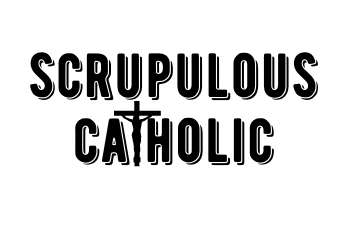Certainly, you are in this blog post to know if is it a sin to dance. Whether you are just here out of curiosity or want to be mindful of your faith’s teachings, in this post we will discuss the relationship between dance and sin.
Dancing is an art, a hobby, and a tradition that has existed for centuries. It is a way to express oneself and have fun with friends and family. Dancing is performed in many ways. You can dance at parties, on stage, or even in your bedroom while listening to music.
Dancing is not only fun but healthy as well. It improves the condition of your heart and lungs. Also improves balance, which can help prevent falling over when getting older.
Physically, there’s no doubt it can make us well. But as Catholics, we also need to look for activities that should also contribute to our spirituality.
Dancing as a Sin
Okay, before we go any further, let’s dissect where dancing comes from and why it relates to sin.
In Exodus 32:19, after Moses had returned from Mount Sinai with the 10 commandments, he saw that the people had made a golden calf and were dancing in front of it. He was so furious that he threw down the stone tablets and smashed them at the foot of the mountain. The people were then punished by being forced to drink poison and die.
However, many scholars believe this is not an explicit ban on dancing but rather a prohibition against idolatry, which is what they were doing when they created the golden calf.
Catholic Church on Dancing
The Catholic Church does not ban dancing. Particularly if performed in a proper manner, with modesty, and without in any way trying to seduce someone of the opposite sex.
On the other hand, the Vatican church has issued a statement, and Pope has supported the Vatican’s position that
“all priests… and other clerics (that means seminarians) are absolutely forbidden from promoting and supporting dances, even if they are held to aid pious works or for some other holy purpose. Moreover, all clerics (that is, priests and tonsured seminarians) are forbidden to attend such dances, should they be given by lay people.”
It is possible for some types of dancing to be sinful if done in an inappropriate context or with improper motives.
Here are some of the examples:
- Pole dancing is a sexy dance in which the dancer uses the pole to perform various moves. The dancer uses the pole to lift themselves into the air, spin, and grind against it. Some consider pole dancing sinful because of its association with stripping. However, it is also to express female empowerment.
- Stripper-style dancing at bachelorette parties. This would be sinful because it promotes lustful thoughts to those who are watching and participating. Potentially leading to immoral sexual activity among young women who are single.
- Twerking is dancing to pop music by moving the hips and butt in the most sexually provocative way. Same with the stripper-style dancing, this could also promote possible sexual sins.
Collectively, these dances might trigger impure thoughts leading to actual sins such as fornication, adultery, and masturbation.
That said, most dances that people do at weddings or other social events fall into categories that are acceptable by the Church.
For example, Cha Cha Line Dances are allowed because they don’t involve excessive physical contact between partners. The same is true with Irish Jigs during the wedding reception rather than the bachelor party, so there really isn’t any need for concern when deciding whether or not it’s appropriate.
Ex-Liturgical Dance
One evidence that the Church does not forbid dancing is the ex-liturgical dance.
When the Church celebrates the sacraments, it does so with movement and song. Dance is one way to express this celebration.
One example of this is the Ethiopian Ritual Dance.
According to their rite, before the Mass is celebrated, Priest and Levites, dance accompanied by Psalm chanting while in the procession.
The Catholic Church states that actions are signs of the realities of the faith and should be performed with reverence and beauty.
However, it also states that “the gestures, postures, and other bodily attitudes expressive of prayer” should be with due moderation.
According to these guidelines, dancing can be an excellent way to celebrate the Sacraments in a reverent manner while expressing joyously the faithfulness of God to us.
Dancing isn’t automatically a sin; it can actually help us worship God.
Biblical Reference
What does the Bible say about dancing?
It should be clear that dancing does not automatically have any negative connotations.
If, for example, someone dances alone to stay healthy or as a way to work out every day, that shouldn’t be seen as wrong. But it would be wrong if the person danced with someone in a lustful way or in front of people who might see them as sexually explicit.
“Now the works of the flesh are manifest, which are these; adultery, fornication, uncleanness, lasciviousness.”
Galatians 5:19
This verse makes it quite clear that lewd behavior or displaying sexual desire is condemned.
In the case of an unmarried couple, when you are dancing wearing a sexy dress to seduce your partner, it’s clear that you’re doing something wrong because it’s provocative, which can lead to sex.
Here is another Bible verse that I’d like to highlight.
“But I say to you that whoever looks at a woman to lust for her has already committed adultery with her in his heart.”
Matthew 5:28
This scripture is often used to condemn dancing.
It is said that dancing (or any kind of physical expression) leads to lust and thus sin.
Others interpret the verse as saying that it is sinful to act upon those lustful thoughts by committing adultery.
This means that even if you do not take any physical action after looking at someone, it can still be sinful because your mind has already thought about what it would be like to have sex with them.
I think this verse is a warning to those who are fond of watching dancers in the immodest outfits. That although they do not physically touch the dancers, there could still be a sin by looking at them with lust.
On the other hand, dancing can be a way that brings glory to God.
“So whether you eat or drink or whatever you do, do it all for the glory of God.”
1 Corinthians 10:31
“Let them praise his name with dancing,” which means we can use our bodies while praising the Lord!”
Psalm 149:3
Dancing as a Sin
Now, let’s answer the question.
Is dancing a sin?
No. Dancing is not a sin. It is not inherently evil. But it can be lewd, sinful, or self-glorifying depending on the dancer’s intention.
Conclusion
In today’s society, dancing is one way of expressing oneself. There is nothing wrong with it as long as our intention is pure and is not to promote lust.
When dancing, remain modest and discrete. Stay away from being arrogant or vulgar.
We should all use dancing as an opportunity for God to help us spread His message about His love for everyone and draw others closer to Him.

